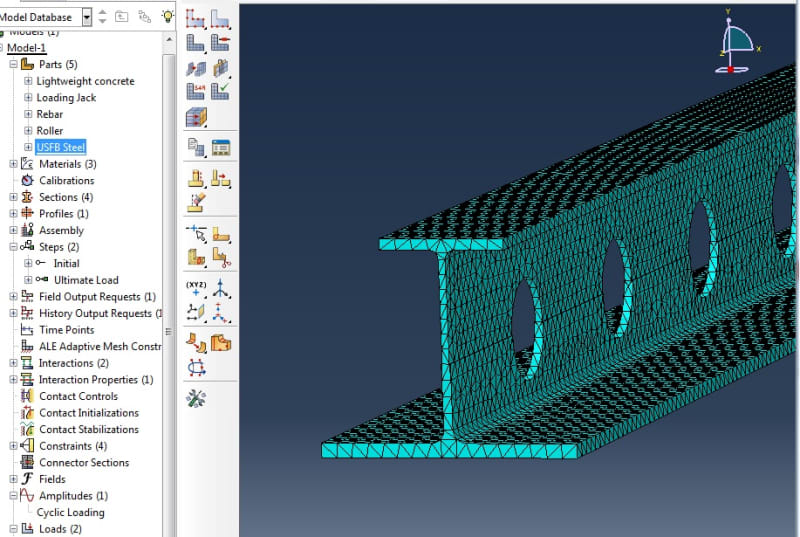
- #ABAQUS 6.14 APPLYING BOUNDARY CONDITIONS AT NODES HOW TO#
- #ABAQUS 6.14 APPLYING BOUNDARY CONDITIONS AT NODES FULL#
- #ABAQUS 6.14 APPLYING BOUNDARY CONDITIONS AT NODES SOFTWARE#
Compared with the Halpin-Tsai model and two-step M-T/Voigt mean-field homogenization method, the RVE based FE homogenization method with the periodic boundary condition is verified to accurately predict the effective elastic properties and elasto-plastic responses of the composites with the complicated micro-structures. Numerical results show that the proposed numerical implementation algorithm of the periodic boundary condition guarantees the stress and strain continuities and uniaxial deformation constraint of the RVEs for the composites with complicated micro-structures. It can be downloaded from Dassault Systemes Knowledge Base (article QA00000046185).
#ABAQUS 6.14 APPLYING BOUNDARY CONDITIONS AT NODES HOW TO#
from dolfin import import numpy as np manual True How to set bcs assert MPI.size(mpicommworld()) 1, 'The code below is intended to run in serial' mesh UnitSquareMesh(40, 40) Build the set of vertices where bcs should be prescribed nodeset VertexFunction('sizet', mesh, 0) bcboundary. Temperature-dependent material properties. Hi, based on our discussion, the following should start you in the right direction.


FEA model descriptions: Model geometry and mesh. The pre-processing (such as the generation of geometry model and application of periodic boundary condition), FE analysis and post-processing (such as the average of stress and strain and stress contouring of the surface nodes) concerning the evaluation of the effective mechanical properties of the composites with complicated micro-structures. Model change for removal / reactivation of elements and contact pair. The maximum model size is limited to 1000 nodes (for both analysis and postprocessing). Abaqus modeling techniques used in present work.
#ABAQUS 6.14 APPLYING BOUNDARY CONDITIONS AT NODES FULL#
This is, of course, not the full version.

The installation instructions are in Section 2 below.
#ABAQUS 6.14 APPLYING BOUNDARY CONDITIONS AT NODES SOFTWARE#
Theres also a Micromechanics Plugin for Abaqus that offers automated periodic BCs. (1) Abaqus Student Edition (Abaqus6.10SE) Finite element Analysis (FEA) software is a FREE download for academic students. The pre-processing (such as the generation of geometry model and application of periodic boundary condition), FE analysis and post-processing (such as the average of stress and strain and stress contouring of the surface nodes) concerning the evaluation of the effective mechanical properties of the composites with complicated micro-structures are conducted in the FE package ABAQUS through the Python Interface. Check the article 'Applying Periodic Boundary Conditions in Finite Element Analysis' by W. To evaluate the effective mechanical properties of the composites with complicated micro-structures, the RVE based FE homogenization method with the periodic boundary condition is introduced and implemented in this paper, and the emphasis is on the periodic boundary condition and its numerical implementation algorithm.


 0 kommentar(er)
0 kommentar(er)
